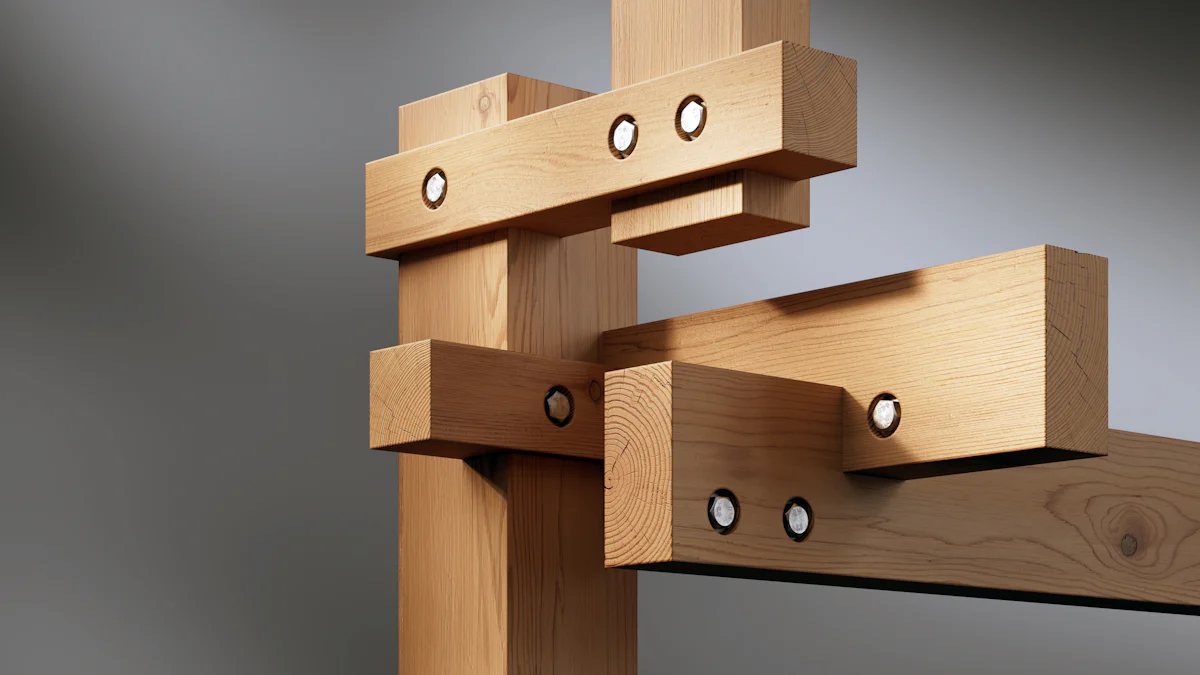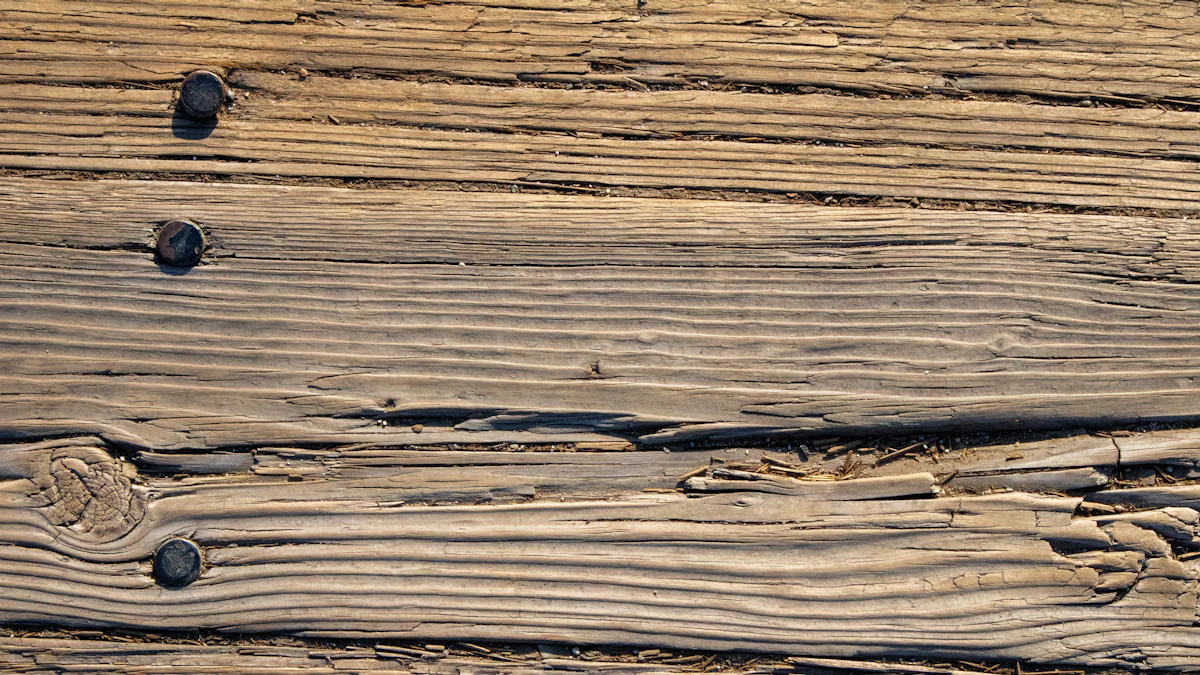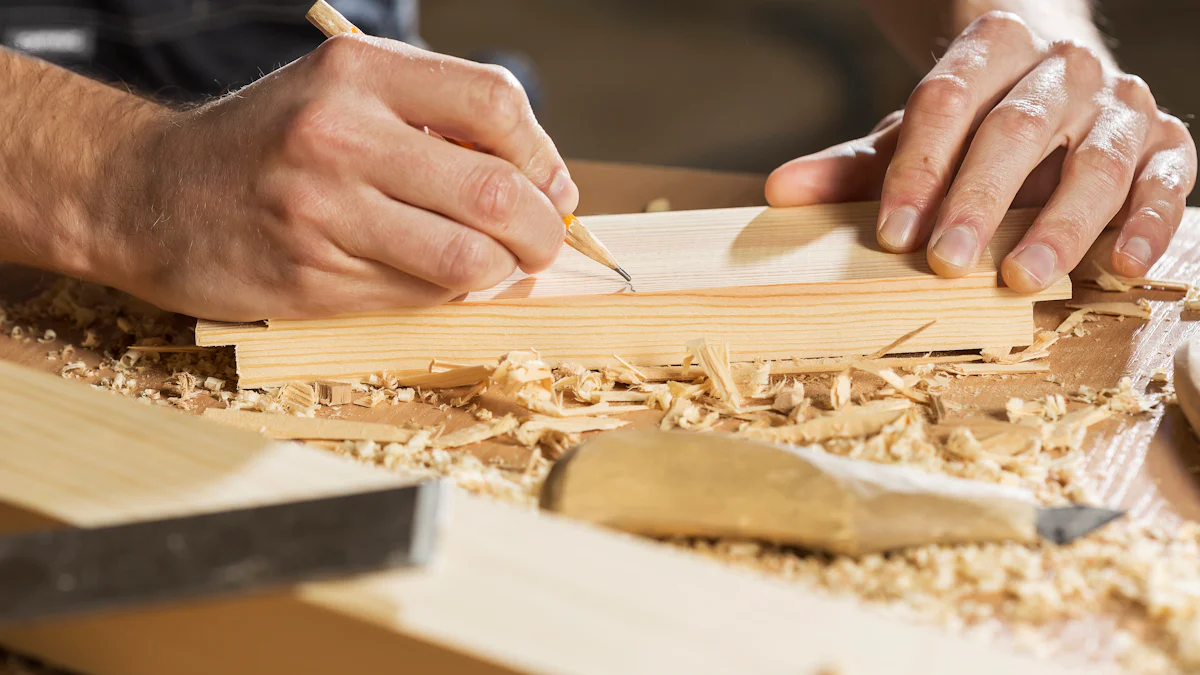SPF Wood

SPF Wood stands for spruce, pine, and fir. These trees create a versatile lumber used in construction. What is SPF Wood? It includes species like Engelmann spruce and lodgepole pine. The origin of SPF Wood traces back to North America. Builders prefer SPF Wood for its strength and availability. What is AC Plywood? It differs from SPF Wood by offering a smooth surface. What is Flocking Powder? It adds texture to surfaces, unlike the structural focus of SPF Wood.
Characteristics of SPF Wood

Strength and Stiffness
SPF wood offers a unique blend of strength and stiffness. This wood features a high strength-to-weight ratio, making it ideal for various applications. Builders appreciate the small sound-tight knots in SPF wood. These knots enhance the overall stability of the material.
Comparison with other types of wood
SPF wood stands out when compared to other woods. The high strength-to-weight ratio provides significant advantages. Other woods may lack the dimensional stability found in SPF wood. The excellent gluing properties of SPF wood further set it apart. SPF wood meets building code requirements for fire safety, strength, and sound transmission.
Impact on construction applications
Construction projects benefit greatly from SPF wood. The material's moderate strength and stiffness make it suitable for structural use. Builders favor SPF wood for framing walls, floors, and ceilings. The ease of workability simplifies construction tasks. SPF wood's dimensional stability ensures long-lasting structures.
Specific Gravity
Specific gravity plays a crucial role in determining wood quality. SPF wood has a specific gravity ranging from 0.35 to 0.45. This range provides a balance of strength and weight.
Importance in determining wood quality
The specific gravity of SPF wood indicates its quality. A higher specific gravity often means better load-bearing capabilities. SPF wood's specific gravity supports its use in demanding applications. Builders rely on this property to ensure structural integrity.
Influence on weight and density
Weight and density directly influence construction choices. SPF wood's specific gravity affects these factors. The balance of strength and weight makes SPF wood efficient for load-bearing purposes. Builders find the lightweight nature of SPF wood advantageous. This characteristic reduces transportation and handling costs.
Durability and Resistance
SPF wood exhibits notable durability and resistance. The natural properties of the wood contribute to its longevity.
Natural resistance to decay
SPF wood possesses a natural resistance to decay. This resistance enhances the lifespan of structures. Builders choose SPF wood for its ability to withstand environmental challenges. The wood's durability reduces maintenance needs over time.
Suitability for different climates
Different climates present unique challenges for construction materials. SPF wood adapts well to various environmental conditions. Its resistance to decay makes it suitable for humid or wet climates. Builders in diverse regions trust SPF wood for reliable performance.
Common Uses of SPF Wood

Construction Industry
SPF wood plays a significant role in the construction industry. Builders often choose SPF wood for framing and structural applications. The strength-to-weight ratio of SPF wood makes it ideal for supporting loads. This wood provides stability for walls, floors, and ceilings. The ease of cutting and nailing enhances construction efficiency. SPF wood's uniform texture allows for precise installation.
Framing and Structural Applications
Framing requires materials that offer both strength and workability. SPF wood meets these needs with its moderate stiffness. Builders use SPF wood to create stable frameworks for buildings. The wood supports heavy loads without adding excessive weight. SPF wood's specific gravity ensures efficient load-bearing. This makes it a preferred choice for floor joists and roof trusses.
Advantages in North American Construction
North American builders value SPF wood for several reasons. The availability of SPF wood ensures a steady supply. The wood's cost-effectiveness reduces construction expenses. Builders appreciate the wood's ability to withstand various climates. SPF wood's resistance to weathering suits outdoor structures. Proper treatment extends the lifespan of SPF wood in exterior projects.
Other Applications
SPF wood finds uses beyond construction. The wood's versatility makes it suitable for furniture and cabinetry. The light color and even grain of SPF wood enhance its aesthetic appeal. SPF wood accepts stains and paints well, offering design flexibility.
Furniture and Cabinetry
Furniture makers favor SPF wood for its workability. The wood allows for clean cuts and easy fastener installation. SPF wood's appearance complements various design styles. The wood's ability to hold finishes adds to its decorative potential. Cabinetry crafted from SPF wood offers both beauty and durability.
Packaging and Shipping Materials
SPF wood serves as an excellent material for packaging. The wood's lightweight nature reduces shipping costs. SPF wood provides strength for protective packaging solutions. The wood's stability ensures safe transport of goods. Manufacturers rely on SPF wood for crates and pallets.
Grading and Standards
Canadian Grading System
The Canadian grading system for SPF wood follows the rules of the National Lumber Grades Authority (NLGA). The most common grade is #2 SPF. This grade is popular for framing and dimensional lumber in both home and commercial construction. The NLGA ensures that all SPF lumber meets strict quality standards.
Overview of grading categories
SPF lumber divides into Eastern and Western species. Each category has specific characteristics. Eastern species often come from Canada and some northern U.S. regions. Western species originate from Canadian forests. The grading system evaluates factors like strength and appearance.
Quality assurance measures
Quality assurance in the Canadian system involves rigorous checks. The NLGA sets these standards to maintain consistency. Regular inspections ensure that lumber meets the required specifications. This process guarantees that builders receive reliable materials for their projects.
US Grading System
The U.S. grading system for SPF wood differs from Canada's. SPF South refers to the U.S. species combination. Specific agencies oversee the grading process in the United States. These agencies ensure that the lumber meets local standards.
Differences from Canadian standards
The U.S. grading system focuses on regional species. This approach contrasts with Canada's broader classification. The grading criteria may vary based on local requirements. Builders must understand these differences when selecting materials.
Implications for import/export
Import and export of SPF lumber involve understanding these grading systems. Canadian and U.S. standards impact international trade. Builders should consider these implications when sourcing materials. Proper knowledge ensures compliance with regulations.
Maintenance and Treatment
Outdoor Use Considerations
Weatherproofing Techniques
SPF wood requires weatherproofing for outdoor use. Apply sealants to protect against moisture. Sealants prevent water absorption and reduce swelling. Regularly inspect the wood for signs of wear. Reapply treatments as needed to maintain protection.
Protective Coatings and Finishes
Protective coatings enhance SPF wood's durability. Use stains or paints to shield against UV rays. These finishes add a layer of defense against environmental factors. Choose products designed for SPF wood to ensure compatibility. Follow manufacturer instructions for best results.
Indoor Use Maintenance
Cleaning and Care Tips
Regular cleaning keeps SPF wood looking fresh. Use a soft cloth to remove dust and dirt. Avoid harsh chemicals that may damage the surface. A mild soap solution works well for deeper cleaning. Dry the wood thoroughly to prevent moisture buildup.
Longevity and Preservation Strategies
Preserve SPF wood with proper care. Maintain stable indoor humidity levels to prevent warping. Use furniture pads to protect against scratches. Regularly check for signs of wear and address issues promptly. Proper maintenance ensures long-lasting beauty and functionality.
Benefits and Drawbacks
Advantages of Using SPF Wood
Cost-effectiveness
SPF wood offers a cost-effective solution for construction projects. Builders find SPF wood affordable compared to other materials. The availability of SPF wood in North America ensures competitive pricing. Construction budgets benefit from the use of SPF wood. The lower cost does not compromise the quality of the material.
Versatility and Availability
SPF wood provides versatility for various applications. Builders use SPF wood in framing, flooring, and roofing. The wood's adaptability suits different construction needs. SPF wood remains readily available across North America. The consistent supply supports large-scale projects without delays.
Potential Drawbacks
Limitations in Certain Applications
SPF wood may not suit all construction scenarios. The moderate strength of SPF wood limits its use in heavy-duty applications. Builders must consider specific requirements before choosing SPF wood. Some projects demand materials with higher durability. SPF wood may require additional treatment for outdoor use.
Environmental Considerations
Environmental impact poses a concern with SPF wood. Harvesting practices affect forest ecosystems. Sustainable sourcing of SPF wood is crucial for environmental health. Builders should seek certified SPF wood to ensure responsible use. Awareness of environmental factors guides better material choices.
SPF wood offers a versatile and reliable option for construction projects. The excellent strength-to-weight ratio and dimensional stability make SPF wood suitable for various applications. Builders appreciate the moderate strength and stiffness for structural uses. SPF wood provides cost-effectiveness and availability, benefiting construction budgets. Consider SPF wood's benefits and limitations when selecting materials. Evaluate project needs carefully to ensure the best choice. Informed decisions lead to successful outcomes in wood selection.
